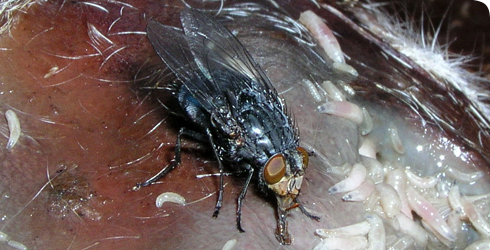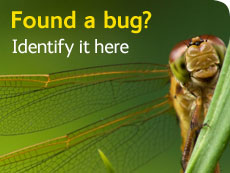Calliphora vicina (urban bluebottle blowfly)
Calliphora vicina is a common species of fly that is well-suited to take advantage of human activities. It generally benefits from the presence of human populations and is sometimes called the urban bluebottle blowfly.
The larvae or maggots feed on decaying organic matter, mainly carrion or foodstuffs of animal origin.
The readiness of blowflies to colonise corpses makes them incredibly useful in forensic investigations.
Species detail
C. vicina is a species of bluebottle. These familiar flies are easily recognised by their:
- large size
- dark-blue, almost black colour
- broad compact body
- metallic abdomen with silvery dusting
-

Use in forensic entomology
Blowflies can contribute valuable information to forensic investigations of suspicious deaths. Find out what they can tell us and about the work of the Museum's forensic entomology team.
-

Taxonomy
Calliphora vicina is the most likely species of blowfly to be encountered in the UK. Learn about its morphology, colour, markings and diagnostic features, and how it can be distinguished from other common relatives.
-

Distribution and ecology
Discover where Calliphora vicina is found and the types of habitat it is associated with, and find out about the important part it plays in the carbon cycle.
-

Biology
Calliphora vicina flies can vary widely in size, although they are generally large. Due to their forensic importance, detailed studies have been carried out to see what affects their growth. Learn more about the biology of blowflies.
-

Behaviour
Learn what is known about the migrations of blowflies as well as the diseases that they can cause and spread.
-

References
Get reference material for Calliphora vicina.
Images

Calliphora vicina male

Calliphora vicina female
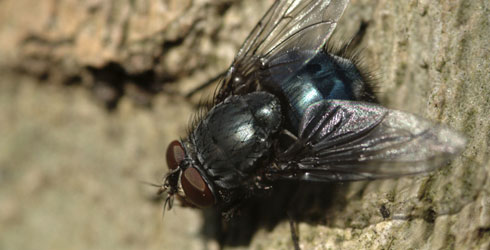
Close-up of a bluebottle (Calliphora sp.) in the Wildlife Garden at the Natural History Museum.

A mounted specimen of the urban bluebottle blowfly, Calliphora vicina, found in the Stanley area of the East Falklands.
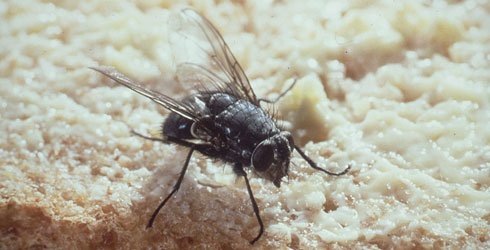
Before arriving on your food, a blowfly may have landed on something less palatable, such as excrement or rotting meat, spreading harmful bacteria in the process.
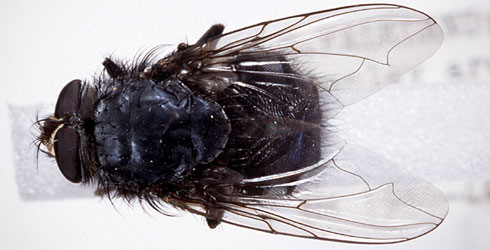
Adult male of the urban bluebottle blowfly, Calliphora vicina. Specimen collected from the Stanley area of the East Falklands, December 1986.

Puparia of Calliphora species, newly formed (bottom) and about 12 hours after pupariation (top). The puparium is formed from the hardened and darkened cuticle of the last larval instar and within it the pupa forms.
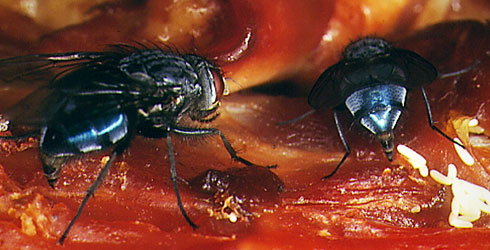
Blowflies lay eggs and feed on rotting meat

A Calliphora blowfly laying eggs on carrion
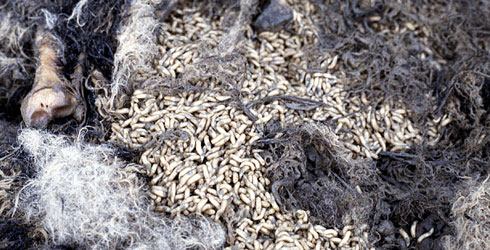
A mass of feeding blowfly larvae on the body of a dead sheep. Blowflies play an important role in the decomposition of corpses.
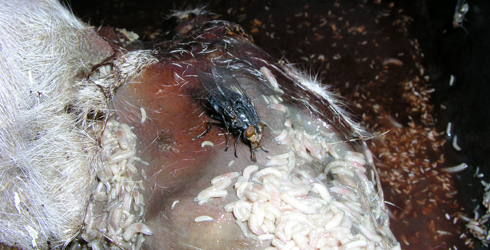
Adult female Calliphora vicina blowfly feeding on a stillborn piglet and surrounded by larvae of the same species
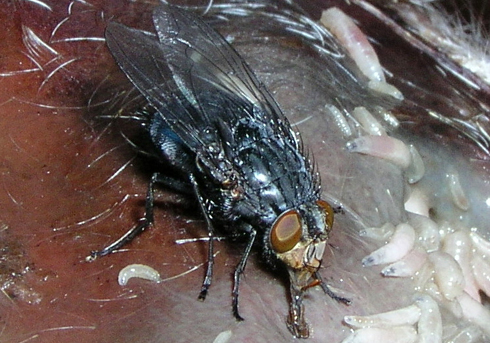
Close-up of an adult female Calliphora vicina blowfly feeding on a stillborn piglet and surrounded by larvae of the same species
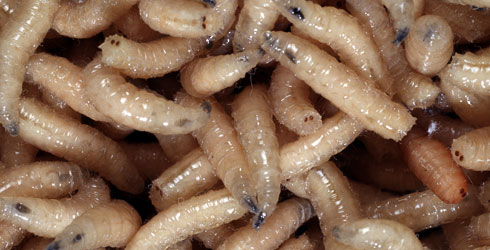
Mature larvae of Calliphora blowflies. These flies are quick to colonise corpses after death and can be used in murder investigations to determine how long ago the person died.
Author
Zoe Adams
Diptera Researcher in the Entomology Department.
